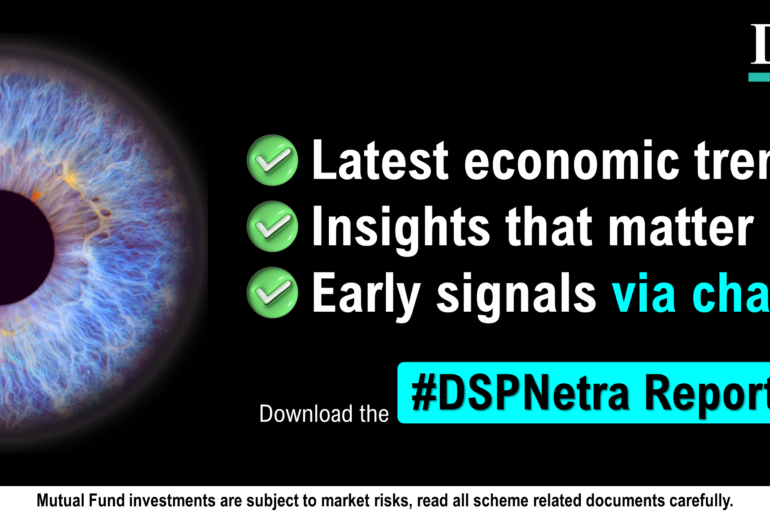Last Updated on Jun 30, 2023 by Anjali Chourasiya
In the Indian economy, the FMCG sector holds the fourth-largest position. It has been expanding at a healthy rate over the years as a result of rising disposable income, favourable government initiatives and policies, a growing youth population, rising brand awareness among consumers, attractive price points, strong logistics and distribution channels and the growth of e-commerce platforms.
This sector encompasses three primary segments: food and beverages, constituting 19% of the industry; healthcare, accounting for 31% of the share; and household and personal care, making up the remaining 50% share (Source – IBEF (IBEF is a trust established by the Indian government and the Confederation of Indian Industry CCI)).
Following is the breakdown of the revenue distribution between the urban and rural segments in the FMCG sector. However, in the last few years, the FMCG market has grown at a faster pace in rural India compared to urban India, and FMCG products account for 50% of the total rural spending.
Table of Contents
Causes for a slowdown in the FMCG sector
During FY 2023, FMCG companies encountered a challenging business environment characterised by two significant obstacles subdued demand and inflation, mainly due to economic uncertainty, changing consumer priorities, the Russia-Ukraine war and geopolitical issues and disruption in global supplies. Consequently, FMCG companies had to grapple with the need to either raise prices or reduce the quantity of their main Stock Keeping Units (SKUs). However, they resulted in limited volume growth and margin compression for many FMCG companies.
Adding to the challenges, the rural sector, which constitutes around two-thirds of India’s population and contributes over 40% of FMCG sales, experienced a slowdown. Higher retail inflation and a few states not getting enough rain meant that the FMCG sector witnessed low rural demand. This further strained the FMCG sector, as the rural market plays a crucial role in driving overall sales and growth as a significant part of India lives in rural areas.
The chart below depicts the FMCG growth (rural and urban) between Q3 CY 2021 – 2022 to Q3 CY 2022 – 2023. The FMCG sector shows a downward trend due to the unfavourable business environment. However, many industrial players and analysts believe that the rural segment is still under pressure and is expected to have a positive trajectory in FY 2024.
The turnaround in 2023
The FMCG sector is witnessing a modest improvement in demand trends across rural and urban markets. Market researcher Nielsen estimates 7-9% growth in India’s fast-moving consumer goods market in 2023, with inflationary pressures easing and the rural markets displaying early signs of growth in the first quarter. Rural markets posted volume growth of 0.3% during the March quarter, returning to growth for the first time in six quarters. The urban markets saw 5.3% growth for the quarter, according to Nielsen’s quarterly FMCG snapshot.
According to Bizom, a retail intelligence platform that tracks consumer product sales across 7.5 mn outlets, rural consumer goods sales rose 16.8% in January-March this year (Q4), showing 8.9 % growth for the full financial year (FY 2023). Urban sales grew 7.9% in Q4, ending the full year with 5.5%. Overall, FMCG sales, urban and rural combined, grew 14.1 % in the fourth quarter and 7.8% in the entire financial year.
The reason for the improvement in demand trends is attributed to several factors:
Firstly, inflation is gradually cooling off as per the latest CPI-based retail inflation figures released by the National Statistical Office (NSO) showed that the key metric had further cooled to 4.7% in April 2023 lowest since October 2021, from 5.7% in March. The ongoing decline in headline inflation is expected to have positive implications for overall consumption, especially in rural areas, as it improves affordability and purchasing power.
Secondly, there has been a softening of commodity prices, including crude and palm oil, wheat, and packaging materials. Although raw material prices have decreased, retail prices have increased, indicating a potential expansion in margins.
Thirdly, improved crop yields have resulted in higher farm incomes. The outlook for rural demand is also anticipated to strengthen, supported by increased government expenditure and the positive effects of a normal monsoon on the rural economy.
New opportunities amidst declining inflation rate
In 2023, there are several opportunities for the rise in FMCG (Fast-Moving Consumer Goods) demand in rural areas of India, coupled with declining inflation. These factors can create a favourable environment for FMCG companies operating in rural markets.
Here are some key points to consider:
- Increasing rural prosperity: Over the past few years, there has been significant progress in rural development, including infrastructure improvements, electrification, access to finance, and government initiatives such as rural employment schemes, Production Linked Incentive Scheme, Project Shakti, and the relaxation of foreign direct investment (FDI) policies. These developments have contributed to increased rural prosperity, leading to higher disposable incomes and improved living standards. As a result, rural consumers now have more purchasing power and are demanding a wider range of FMCG products.
- Changing consumption patterns: The consumption patterns in rural areas have been evolving rapidly. There is a shift from necessities to branded and packaged goods. Consumers are now seeking convenience, quality, and value-added products. FMCG companies can leverage this changing landscape by introducing affordable product variants, smaller packaging sizes, and innovative marketing strategies tailored to rural consumers’ preferences.
For Instance, Godrej Consumer Products has a diverse range of FMCG offerings, including personal care, home care, and hair care products. The company has made efforts to penetrate rural markets by introducing smaller pack sizes, value packs, and affordable product variants.
- Growing awareness and aspirations: With the proliferation of media, including television, mobile phones, and the internet, rural consumers are becoming more aware of the latest trends, brands, and products. They aspire to enhance their lifestyles and are willing to spend on FMCG goods that were previously considered luxury items. This growing awareness and aspirations among rural consumers present an opportunity for FMCG companies to tap into this expanding market.
For instance, Dabur can focus on marketing campaigns highlighting its products’ health benefits, such as Dabur Chyawanprash, Dabur Honey, and Dabur Red Toothpaste. By emphasising the value and convenience of these products, Dabur can tap into the aspirations of rural consumers.
- Distribution network expansion: FMCG companies have been actively expanding their distribution networks in rural areas to capitalise on the untapped market potential. Improved distribution infrastructure helps reach remote areas, ensure product availability, and address logistical challenges.
For Instance, ITC has a strong presence in rural India through its FMCG division. ITC’s distribution network reaches remote rural areas, and the company has been actively targeting rural consumers with affordable and value-added products.
- Growth of e-commerce: There has been a noticeable shift in demand as a result of e-commerce’s accessibility across the country, in rural or urban locations. It provides more consumer convenience because users can quickly select and purchase things of their choice online.
Declining inflation can positively impact FMCG demand in several ways: –
- Increased purchasing power: When inflation is low, the cost of essential goods and services remains stable, allowing consumers to allocate a larger portion of their income towards discretionary spending, including FMCG products. This can boost demand and sales for FMCG companies.
- Competitive Pricing: Lower inflation rates often lead to more stable input costs for FMCG manufacturers. They can pass on the cost benefits to consumers by offering competitive pricing, discounts, or promotional offers. This can attract price-sensitive rural consumers and drive demand.
- Enhanced Consumer Confidence: Declining inflation improves overall economic stability and consumer confidence. When consumers feel confident about the economy and their financial situation, they are more likely to spend on non-essential items, including FMCG products.
FMCG and NIFTY
Overall, the market direction is up. Therefore, you would expect to see the consumer business, especially FMCG, do reasonably well this year. Major FMCG companies’ valuations have moderated and are now below historical averages. Within the next 12 months, it is anticipated that valuations will return to mean levels as volume growth and profitability potential increase.
The Road Ahead
Industry analysts predict a recovery in rural growth in FY 2024, supported by moderating inflation, expectations of a good harvest, and continued government spending on rural infrastructure, given the upcoming major state election followed by the general election the following year. Most FMCG companies are expected to have a stable year in FY 2024, with growth in both top and bottom lines driven by volume recovery and margin expansion on the back of stable raw material prices. However, the sector faces a risk from the impact of El Nino, which could potentially delay rural recovery and should be closely monitored.
The service Purchasing Managers’ Index (PMI) for April 2023 reached a 13-yr high of 62, indicating sustained growth in the service economy. This positive momentum will contribute to overall urban remittances in rural areas. Moreover, rural wages are already increasing, and the Reserve Bank of India’s intervention in controlling inflation will further drive volume growth in the coming quarters. Additionally, there is a significant pent-up demand expected in discretionary categories like skincare, hair care, and personal care, which will further boost sector volume growth.



